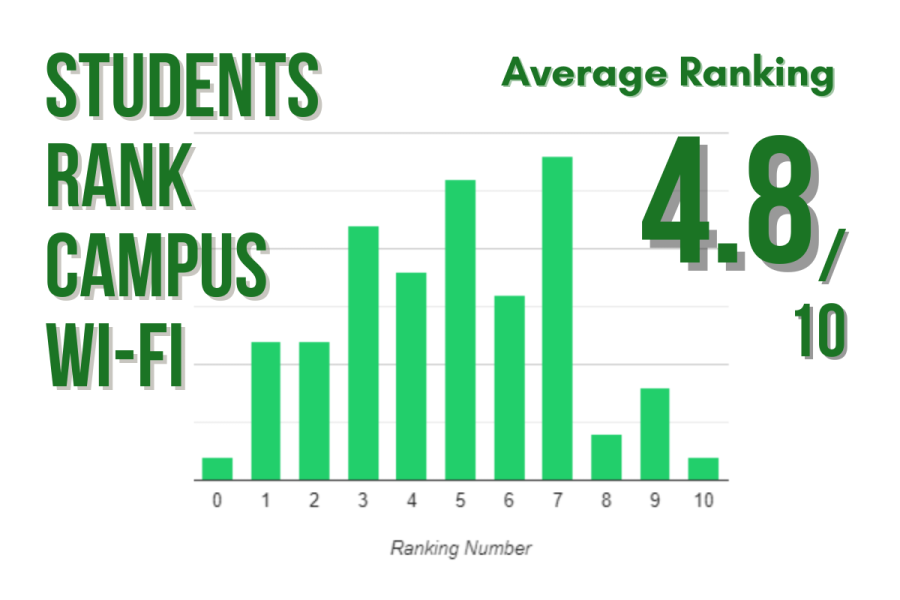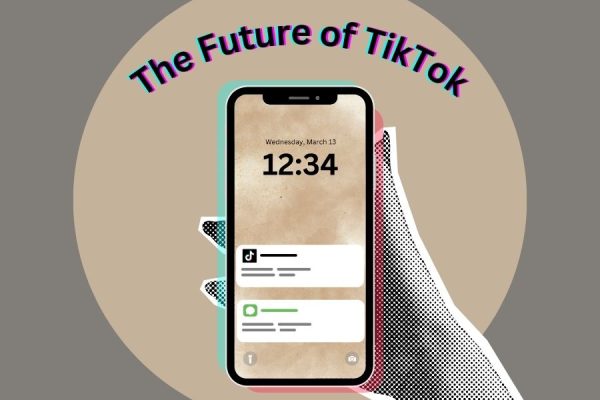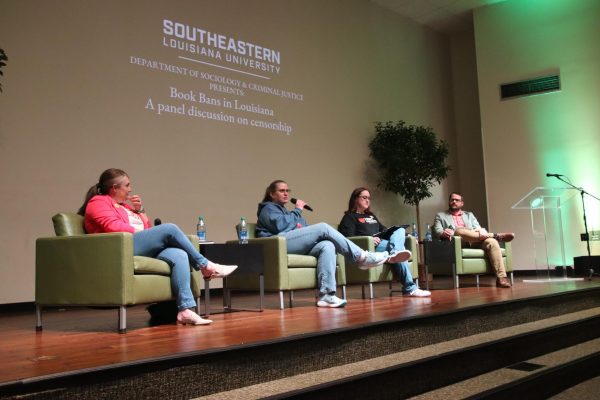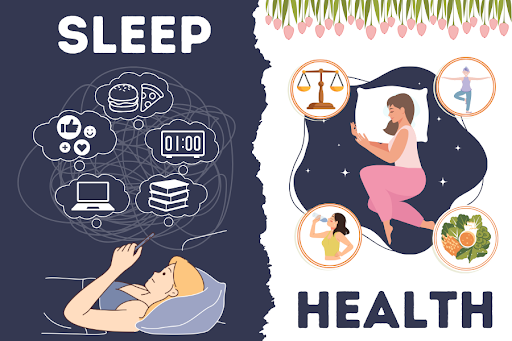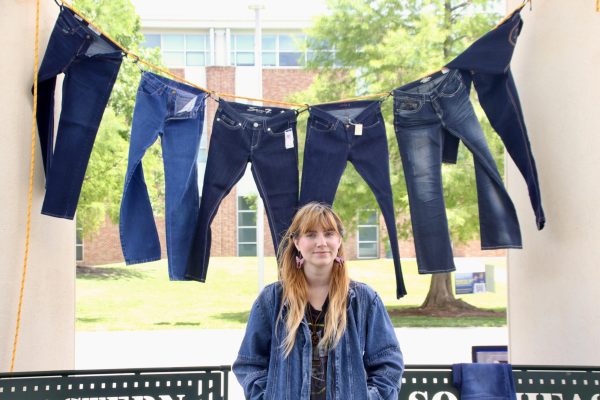SLU students give campus Wi-Fi a failing grade
Students and faculty all over campus have reported consistently experiencing internet deficiencies in different buildings throughout their day. There is now a growing chorus of voices advocating for more resources to be allocated toward increasing Wi-Fi speeds.
To investigate this issue, The Lion’s Roar did a deep dive into the reported campus internet problems and found the connectivity complaints are not without merit. In a poll of students on SLU’s internet quality, campus Wi-Fi received an average ranking of 4.8 out of 10. Full results of the informal survey appear at the end of the article.
───────────
Whether they live on campus or commute, many SLU students feel the quality of campus internet has declined in recent years to the point that they are unable to complete their coursework properly or in a timely manner. The issue also affects faculty, with internet lags, glitches and sometimes a complete inability to connect, foiling their well-planned lessons and, at times, causing entire class sessions to go awry.
The Office of Technology, which is in charge of maintaining campus internet, claims there are many reasons why it is not performing optimally, one of which is the shutdown of D. Vickers Hall, creating new areas of high traffic.
“There is no easy solution to increasing the capacity in areas that are both suddenly and temporarily high-traffic. The cost would be extremely high if we were to create a permanent solution to a temporary problem. In addition, there is a 9-12 month delay between ordering network devices and receiving them,” said Dr. John Burris, the Office of Technology’s interim chief information officer.
Burris compared SLU’s problem of sluggish internet to traffic jams brought on by a road closure.
“If the I-10 in Baton Rouge were closed for six months, traffic would have to be diverted to other areas. Those other bridges would have the same number of lanes and it is impractical (almost impossible) to simply add another bridge in time for it to be useful,” Burris said.
While the Office of Technology says increased demand is to blame for the poor quality of campus internet, in older buildings like McGehee Hall, other issues may be at play. Faculty have reported poor to no internet in the building as far back as 2018. Its concrete walls and metal wires mean a wireless router is required in every room. McGehee’s outdated infrastructure makes it tougher for the Office of Technology to improve internet speeds, which in turn frustrates the students who attempt to do work or have classes there.
On Wednesday, Sept. 21, junior health science and kinesiology major Christian Butler reached out to several offices about his concerns with the lack of Wi-Fi in McGehee Hall. Survey results show Butler is just one of many annoyed and affected by Wi-Fi troubles.
Student concerns center on a lack of explanation for the inadequate internet and the university’s lack of action to address the problem thus far.
During COVID-19, the university was forced to make substantial changes to the way classes were delivered, transitioning many of them to an online format. As things at Southeastern got back to normal, this strategy morphed into a mix of online and in-person instruction, aka hybrid courses. While these changes allowed students to continue their studies during the pandemic, many faculty have opted to keep their classes in these altered forms. Now students are constantly required to use the internet and connect to the campus Wi-Fi for class assignments, quizzes and tests; however, the Wi-Fi is struggling to keep up.
“The internet just doesn’t work. Especially when you are working with a time constraint, it’s a problem. I have an English class in McGehee and we are not able to do assignments sometimes in class,” Butler said.
While McGehee Hall has dealt with fickle Wi-Fi for years, it has gotten worse since the Fall 2022 semester began. Students visiting the writing center in McGehee cannot receive adequate help, as they sometimes must spend half their appointment trying to connect to the internet.
“This didn’t happen last semester, at all. What’s happening is nobody can connect to the SLU-Secure server. It is an absolute no go for lots of people, coworkers and students,” said Writing Center staff and senior English major Jordan Franklin.
Franklin and other students have had to resort to using the SLU guest network (which is also unreliable and has a password that changes every month) or their personal data to complete their work. Many find this unacceptable in classes that require a stable internet connection.
The Office of Technology, however, is working toward a solution with a new system. They have rolled out a network infrastructure upgrade plan that points out key buildings which need the most help in their internet speeds. Garrett Hall and the Teacher Education Center are slotted for connectivity upgrades by Summer 2023.
“We are establishing a rotation to phase infrastructure upgrades across campus in a way that provides the most increased access to the most number of students. In the past, this has been driven by on-demand needs/issues. The Network Infrastructure Upgrade Plan is our approach to establish a better standard of access across campus where there is the most student need,” Burris said.
Despite these impending improvements, students may have trouble holding on until next summer for better functioning internet. In The Lion’s Roar’s informal internet satisfaction survey, respondents indicated internet speeds are not optimal, the internet struggles most in popular buildings like Fayard and the Student Union, and that the worst internet times are in the early afternoons.
Survey results
The primary question respondents were asked was to rank internet speed quality on a scale from zero to 10, with zero being the worst and 10 being the best. As noted above, students gave the internet an average score of 4.8. However, the most selected ranking was a seven, chosen by 14 out of 75 respondents. And yet, despite many students ranking the internet a seven, considering the results in full, SLU internet gets a failing grade.
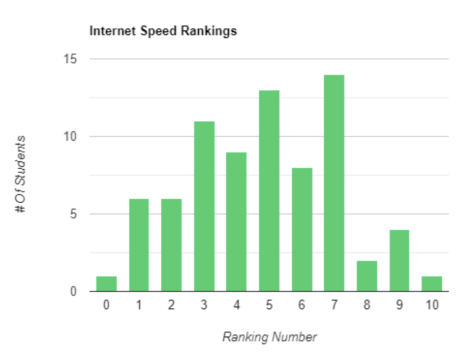
Then, The Lion’s Roar asked students to name where and when they believed they experienced the most issues with the school’s internet. Out of the sample size, the most common answers for buildings were the Student Union and Fayard Hall, not Garrett or the TEC. In fact, the Teacher Education Center was only listed by one of the 75 respondents as an area with poor connectivity.
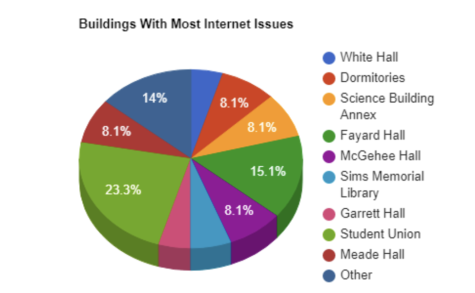
When asked what times they would experience the most issues, almost 50% of students said they have the most problems in the afternoon hours. The second most common answer was “All Day,” implying underlying connectivity issues persist outside of peak usage times.
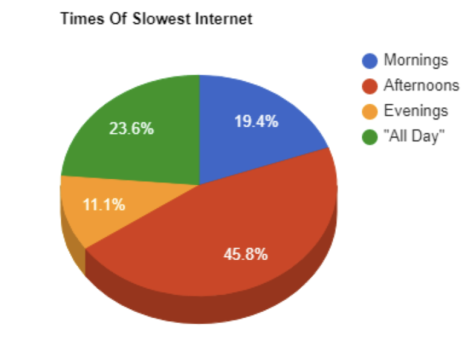
Students having issues in early afternoons line up with the data reported by the Office of Technology, stating peak traffic occurs in that time period. “It’s all about traffic. During ‘peak’ hours, there usually will be some congestion. From 11 a.m. to 1:45 p.m., there will be significantly higher demand. In some areas, this may lead to a decrease in internet speed or network availability,” Burris said.
Ultimately, survey results indicate students and faculty are not happy with the internet, and there is room for improvement. But with outdated infrastructure and an extremely large wait time for new upgrades, friction between those who need functional internet and those in charge of making it available continues to grow, as a solution is still a long way off.
The Office of Technology insists if a student is having an issue with their connection to the internet, they should contact their Help Desk at 549-2700 (students) or 549-5555 (faculty) so they can help identify areas of concern. They also note it is important for them to determine if the issue is on their end or an issue with the student’s device.
Your donation will support The Lion's Roar student journalists at Southeastern Louisiana University.
In addition, your contribution will allow us to cover our annual website hosting costs.
No gift is too small.
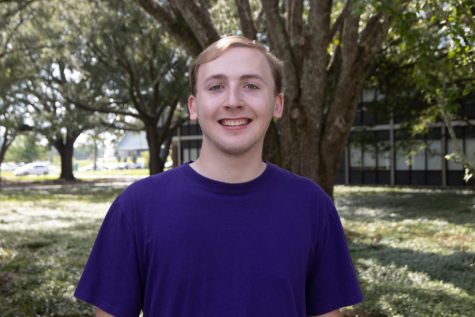
Austin O’Brien is an English major with a Communication minor from Marrero, La. He enjoys different types of entertainment from movies to video games...

Abigail Fischer is majoring in English with a concentration in creative writing and minors in French and publishing studies. During the Spring 2022 semester,...


